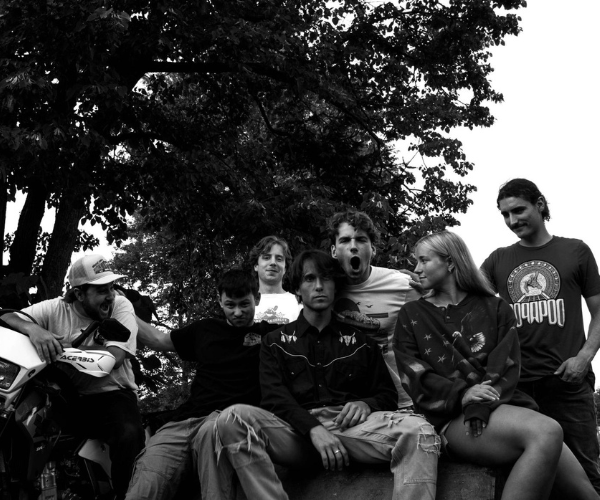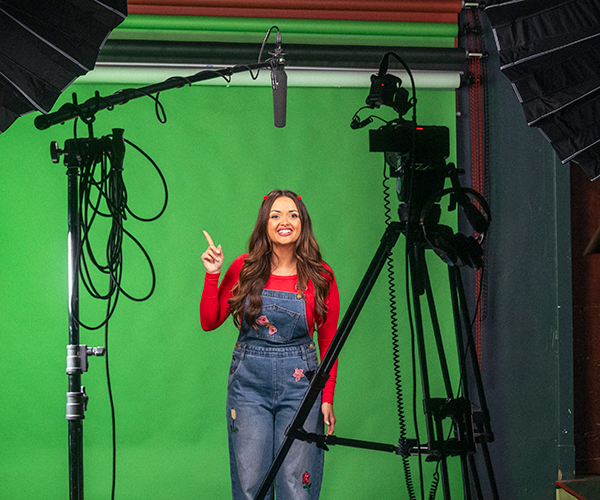The story of Dana Schutz the painter is often confused with the story of Dana Schutz the phenomenon.
Her meteoric rise to fame and fortune — she is only 30 — is the one most often told. Her paintings are often bought before they are done — or begun. They sell for five and six figures. The Museum of Modern Art in New York acquired one of her notable paintings, “Presentation,” which hangs in the opening to its contemporary galleries. Only four years out of graduate school, Schutz has acquired the kind of awe and status usually reserved for a lucky few artists twice her age.
On the opening night of her exhibition at the Museum of Contemporary Art (MOCA) Cleveland, Dana Schutz: Paintings 2002-2006, the lithe, wiry-haired painter faced a curious crowd of friends, former classmates and strangers. In contrast to her large, loud, wildly colored paintings, her voice could barely be heard.
“I spend a lot of time mixing colors before I paint,” she says. “I think about color in a bodily way.”
Most of her paintings deal with contorted, almost violently twisted and colored bodies. Her liberal swaths of paint have been described as sculptural. Gaudy purples sidle up next to great blocks of bright red; hot pinks sit uncomfortably next to all manner of ochres. A Schutz painting is unmistakable.
To create them, Schutz often sets up a hypothetical situation and follows it through. Referencing her “Frank From Observation” series of paintings, she says, “What if there was one man left on earth? And what if the last man on earth had a painting? What would it be?”
But she’s also apt to second-guess her choices, asking, almost to herself, “Do I want my paintings to be so extroverted?”
Girlish and straightforward, Schutz does not talk in lofty, academic “art-speak,” which may be part of her charm. But then, Schutz usually doesn’t have to talk about her work or process much.
Her paintings speak for her. And critics, curators, dealers and collectors rush in with lavish praise.
“In many of her dynamic works, Schutz attempts to paint things that one almost cannot imagine,” says Raphaela Platow, curator of The Rose Museum, Brandeis University, in Waltham, Mass., where this exhibition began.
Her paintings need a lot of space between them so viewers can step far back to fully see her work, making MOCA Cleveland a perfect venue for Schutz’s first comprehensive museum show.
Cleveland likes to claim Schutz for itself; she did spend five formative years at the Cleveland Institute of Art, graduating in 2000. But she grew up in Livonia, Mich., the daughter of teachers, and now lives and works in Brooklyn, N.Y. She received her MFA from Columbia University in 2002. Not long after, New York critic Jerry Saltz began a torrent of praise that hasn’t yet stopped.
“Although she’s still developing, I love Schutz’s daredevil style and anarchic freedom,” he said in December 2002.
Her calamitous colors and adamant brushstrokes create the sense that her paintings are riots about to rush the gates of the frame. Yet her compositions are sturdy, often symmetrical and surprisingly formal. The settings of her paintings, she says, “are places where you can invent things — woods, beach, studio, even a surgical table.”
At MOCA, there are several paintings from earlier series; one of the most dramatic being the “Self-Eaters.” In these she depicts people gorging on their hands or devouring other parts of the body.
Schutz claims they are not horrific, but they are people who are eating and regurgitating themselves — a stark visual of psychological reinvention. Some of her characters are looking for body parts, trying to complete themselves.
“Party,” a composition resembling an elephant in profile, stands out among her newer works.
Look more closely and it’s President Bush’s cabinet, in disarray and wrapped up in microphone cords. Schutz says she never intended to create an elephant. A purely intuitive painter, she began at the bottom mixing shapes and colors, creating a structure of figures — Dick Cheney, Condoleezza Rice, Donald Rumsfeld — until it began to look like an elephant, a perfect visual vehicle for the subject.
Another work, one that may point in a new direction for Schutz, is the self-portrait. Pale and off-kilter, it shows the painter in her studio, littered with coffee cups and dead plants, peering into a computer screen of images. “Anything from the culture can come into my work,” she says, “but I don’t paint about the culture.”
The paintings of Dana Schutz are more like fireworks, each one an event. It’s the kind of work that demands attention, no matter what the viewer thinks. She said she is trying to paint an abstract painting, but is having trouble. But after viewing these pieces, it’s hard to imagine Schutz having any trouble at all. n
Color Wonders
entertainment
12:00 AM EST
November 20, 2006



